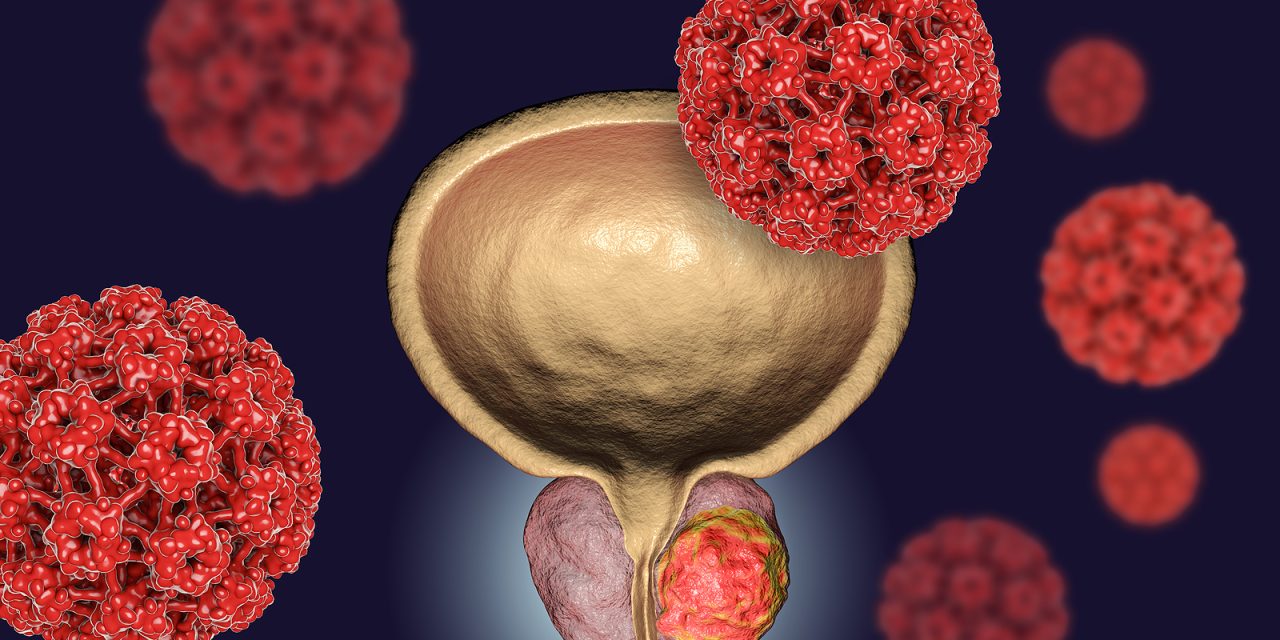The prostate gland is a vital part of the male reproductive system, playing a significant role in sexual function and urinary regulation. As men age, it’s common for the prostate to enlarge, a condition known as benign prostatic hyperplasia (BPH). This natural growth often leads to uncomfortable urinary symptoms due to the pressure the enlarged prostate places on the bladder and urethra.

Understanding the reasons for prostate enlargement is critical in managing the condition effectively. Age is a significant factor, but hormone changes, lifestyle, diet, and genetics also contribute to BPH. Recognizing symptoms early, such as urinary difficulties, can lead to a timely diagnosis and effective management. Men facing these issues have several options, ranging from lifestyle adjustments to medication and, in certain cases, surgery. Each treatment path has its considerations, and a healthcare professional can provide guidance tailored to the individual’s situation.
Key Takeaways
- Prostate enlargement is commonly linked to aging and can impact urinary function.
- Early detection of BPH symptoms allows for a wider range of treatment options.
- Consulting with healthcare professionals is essential for personalized treatment strategies.
Understanding the Prostate Gland
The prostate gland is a vital part of the male reproductive system, responsible for producing seminal fluid that nourishes and transports sperm. It’s located below the bladder, encircling the urethra, which is the duct through which urine and semen exit the body.
- Size and Location: The prostate is typically the size of a walnut and grows larger as men age.
- Function: The gland contributes to sexual function and reproductive processes.
It is sensitive to sex hormones, particularly testosterone, which regulates its growth and functioning. Changes in these hormones’ levels can influence prostate size and health.
Common Conditions:
- Benign Prostatic Hyperplasia (BPH): Non-cancerous enlargement of the prostate.
- Prostatitis: Inflammation, sometimes caused by infection.
- Prostate Cancer: Malignant growth within the prostate.
Regular check-ups with a healthcare provider are important, as they can monitor prostate health and address potential problems early on. Management strategies vary depending on the specific condition but can include medications to adjust hormone levels or reduce gland size, and in some instances, surgery may be advised.
It’s crucial for individuals to understand the functions and potential issues related to the prostate gland, to maintain overall health and well-being.
Causes of Prostate Gland Enlargement
Understanding the specific causes of prostate gland enlargement, medically known as benign prostatic hyperplasia (BPH), is essential for addressing the condition effectively. This section explores the factors contributing to the enlargement of the prostate gland.
Aging and Hormonal Changes
As men age, hormonal fluctuations play a significant role in the enlargement of the prostate gland. Testosterone levels decrease while estrogen levels relatively increase, which may stimulate prostate cell growth, leading to BPH. Research supports that aging is a prominent risk factor for the development of an enlarged prostate.
Lifestyle Factors
Lifestyle choices may also impact the health of the prostate. Factors such as lack of physical activity, obesity, and a diet high in red meat and dairy products could exacerbate the risk of developing an enlarged prostate. It is suggested that adopting a healthier lifestyle might mitigate some risk associated with BPH.
Genetic Predisposition
A family history of prostate issues can be a telling indicator of one’s predisposition to BPH. Genetic factors are acknowledged as significant causes in the onset of prostate gland enlargement. Those with a lineage of prostate conditions should be particularly attentive to the health of their prostate as they age.
Identifying Symptoms of an Enlarged Prostate

An enlarged prostate, medically known as benign prostatic hyperplasia (BPH), can present a range of urinary symptoms that vary in severity. Generally, these symptoms are due to the pressure the larger prostate exerts on the urethra and bladder.
Common symptoms include:
- Frequent urination: Individuals may find they need to urinate more often, especially at night, which is referred to as nocturia.
- Urgency to urinate: There may be sudden, compelling urges to urinate that are difficult to control.
- Weak urine stream: The stream of urine may be soft or slow, indicating an inhibited urine flow.
- Difficulty starting urination: Also known as hesitancy, this is when one has trouble initiating the urinary process.
- Straining while urinating: Experiencing the need to pull or push to start urination is another indicator.
Moreover, dribbling at the end of urination could occur and is often marked by a sensation of incomplete bladder emptying. In some cases, urinary retention may happen, where one cannot urinate at all despite the urge, which requires prompt medical attention.
While bladder and kidney complications can arise from an enlarged prostate, the presence of pain during urination or bloody urine could suggest an infection.
If any of the these symptoms are observed, consulting with a healthcare provider is crucial. They can guide through the diagnostic process, including a physical examination, urine tests, or imaging studies. Understanding these symptoms is the first step in addressing the impact of an enlarged prostate on one’s quality of life.
Complications Associated with Prostate Enlargement

Prostate enlargement, medically known as benign prostatic hyperplasia (BPH), can lead to various complications if not managed effectively. These complications mainly affect the urinary tract and can range from acute urinary retention to severe kidney damage.
Urinary Retention
Urinary retention is a common complication of prostate enlargement, where the bladder does not empty completely. Acute urinary retention requires immediate medical attention, as it can be a painful condition where one is suddenly unable to urinate at all. Chronic urinary retention, on the other hand, is a long-term condition that might lead to bladder damage.
Urinary Tract Infections
The risk of urinary tract infections (UTIs) increases when the bladder doesn’t empty fully. Frequent UTIs can occur due to residual urine serving as a breeding ground for bacteria. These infections can be a recurring problem and may require treatment with antibiotics.
Bladder Stones
Incomplete bladder emptying may also contribute to the formation of bladder stones. These stones are crystallized mineral deposits that can cause additional discomfort, urinary tract blockage, and complications if not treated.
Kidney Damage
Severe and prolonged urinary retention can lead to kidney damage. The back pressure from a full bladder can damage the kidneys over time. In extreme cases, it can even lead to kidney failure, a serious condition requiring immediate medical intervention.
Diagnostic Procedures for Enlarged Prostate

Accurate diagnosis of an enlarged prostate is essential to determining the best course of treatment. Doctors use a series of diagnostic procedures to assess prostate size, function, and to rule out other conditions.
Medical History and Physical Exam
A thorough medical history is the first step in diagnosing an enlarged prostate. The doctor will inquire about urinary symptoms and their impact on quality of life. During the physical exam, a digital rectal exam (DRE) is conducted to assess the prostate’s size physically and to check for abnormalities.
Blood Tests and PSA Levels
Blood tests are instrumental in evaluating kidney function and identifying signs of prostate issues. The Prostate-Specific Antigen (PSA) test measures the level of PSA in the blood, with elevated levels suggesting an enlarged prostate or other prostate conditions.
Ultrasound and Cystoscopy
An ultrasound can provide images of the prostate to help gauge its size and any abnormalities that may indicate BPH. In some cases, a cystoscopy might be performed, where a scope is inserted into the urinary tract to view the urethra and bladder, offering valuable insights into the prostate’s health and urinary function.
Lifestyle and Home Remedies

When addressing an enlarged prostate, specific lifestyle changes and home remedies can be beneficial in managing symptoms. One’s diet and physical activity levels play crucial roles in the overall health of the prostate.
Dietary Modifications
Modifying one’s diet can significantly impact prostate health. It is advisable to reduce the intake of caffeine and alcohol, as they can exacerbate urinary symptoms by stimulating urine production. A diet rich in fruits, vegetables, and healthy fats can support prostate health. Incorporating foods that are high in antioxidants can also be beneficial.
- Limit caffeine: Avoid drinks like coffee and tea that can increase urine production.
- Reduce alcohol consumption, Especially in the evening, to prevent nocturia (nighttime urination).
- Focus on fruits and vegetables: These provide essential nutrients and fibers that support overall health.
Exercise and Weight Management
Regular exercise and maintaining a healthy weight can help alleviate the symptoms of an enlarged prostate. Obesity is a recognized risk factor for worsening prostate problems, so weight management is a key component of home-based care. Physical activities, such as aerobic exercises and resistance training, can improve one’s fitness and potentially benefit prostate health.
- Regular exercise: Aim for at least 30 minutes of moderate activity most days of the week.
- Weight management: Strive to maintain a healthy weight to lower the risk of symptoms worsening.
Medication Options for Treatment

Various medications are available for treating an enlarged prostate, each working in different ways to alleviate symptoms and improve urinary flow. The main categories are alpha-blockers, 5-alpha reductase inhibitors, and other prescribed medications.
Alpha-blockers
Alpha-blockers relax smooth muscle in the prostate and the bladder neck, which can help to ease the flow of urine in men with an enlarged prostate. Common alpha-blockers include tamsulosin and alfuzosin, providing symptom relief usually within a few days to weeks. However, potential side effects might include dizziness, fatigue, and in some cases, low blood pressure.
5-alpha Reductase Inhibitors
These medications, dutasteride and finasteride, reduce the size of the prostate by blocking the hormonal conversion that stimulates prostate growth. Effective at shrinking the prostate and improving urinary symptoms, these 5-alpha reductase inhibitors can take several months to provide relief. It’s also important to note the possible side effects, which may include decreased libido and ejaculation issues.
Other Prescribed Medications
Surgical Treatments and Procedures

When medications and lifestyle changes are not enough to alleviate the symptoms of benign prostatic hyperplasia (BPH), surgical intervention might be considered. Surgical procedures, ranging from traditional to minimally invasive, offer different levels of invasiveness and recovery times.
Transurethral Resection of the Prostate (TURP)
Transurethral Resection of the Prostate (TURP) is a joint surgery for BPH. This procedure involves removing excess prostate tissue to allow for normal urine flow. The surgeon inserts a resectoscope through the penis to trim away prostate tissue blocking the urethra. TURP is considered an effective treatment for men with moderate to severe urinary problems that have not improved with medication.
Transurethral Incision of the Prostate (TUIP)
In Transurethral Incision of the Prostate (TUIP), one or two minor cuts are made in the prostate gland, making it easier for urine to pass through the urethra. This procedure is generally used when the prostate is less enlarged and is considered less invasive than TURP, with a potentially quicker recovery period.
Minimally Invasive Treatments
Minimally invasive treatments for BPH include various techniques:
- Transurethral Needle Ablation: This uses radiofrequency energy to shrink prostate tissue.
- Water-induced Thermotherapy: Hot water is used to destroy excess prostate tissue.
These procedures are typically considered less invasive than traditional surgery and often come with shorter recovery times.
Alternative Surgical Options
There are several alternative surgical options for the treatment of BPH:
- Open Prostatectomy: A more invasive surgery that typically involves a hospital stay and is often used for very large prostates.
- Simple Prostatectomy: An enucleation procedure to remove a section of the prostate.
While open prostatectomy and simple prostatectomy are less common than TURP or TUIP, they may be more suitable for certain cases of BPH, particularly when the prostate is greatly enlarged or if there are other complicating factors.
Dealing with Chronic Conditions

Managing chronic conditions of the prostate gland, such as benign prostatic hyperplasia and prostate cancer, can significantly affect a person’s quality of life. It is essential to understand these conditions and the awareness measures that can facilitate early detection and effective management.
Chronic Prostatitis
Chronic prostatitis is a persistent inflammation of the prostate gland that can lead to discomfort and urinary symptoms. It encompasses nonbacterial and chronic bacterial forms, both of which can cause pain in the pelvic region, difficulties with urination, and sometimes sexual dysfunction. Treatment options for chronic prostatitis often include:
- Medications such as anti-inflammatory drugs and alpha-blockers to relax the muscle fibers
- Physical therapy focused on the muscles of the pelvic floor
- Behavioral modifications like stress reduction techniques
Prostate Cancer Awareness
Prostate cancer is one of the most common cancers affecting men, and early detection is crucial for successful treatment and maintaining quality of life. Key aspects of prostate cancer awareness include understanding risk factors, recognizing symptoms, and regular screenings for those at higher risk. Screening tests might include:
- Prostate-specific antigen (PSA) blood test: Elevated PSA levels may indicate the presence of prostate cancer, benign prostatic hyperplasia, or other conditions.
- Digital rectal exam (DRE): A healthcare provider feels the prostate gland for abnormalities.
Therapeutic approaches for prostate cancer may vary from watchful waiting for slow-growing cancers to more active interventions such as surgery, radiation therapy, or hormone therapy for aggressive forms of cancer. Treatment choice depends on multiple factors, including the stage and grade of cancer and the patient’s overall health and preferences.
Preventive Measures and Screening
Lifestyle and Risk Factors
Lifestyle modifications can potentially influence the risk of developing an enlarged prostate. Regular exercise and maintaining a healthy diet are essential steps to lower the risk of various conditions, including benign prostatic hyperplasia (BPH).
Family History
A family history of prostate issues is a significant risk factor. Individuals with a relative who had prostate concerns may have an increased propensity for the same issues. Awareness of one’s family medical history can guide one’s actions regarding screening and prevention.
Screening Tests
Screening for prostate enlargement typically involves several key assessments:
- Prostate-specific antigen (PSA) test: A blood test measuring the level of PSA, a substance produced by the prostate gland. Elevated levels may indicate an enlarged prostate or other prostate conditions.
- Digital Rectal Exam (DRE): A healthcare provider assesses the prostate for abnormalities during a DRE. While the U.S. Preventive Services Task Force does not recommend DRE as a stand-alone screening due to a lack of evidence on benefits, it may be used in conjunction with other tests.
Consulting a Urologist
Men should consult a urologist for individual risk assessment. A urologist can provide personalized advice on screening intervals and preventive strategies.
When to Screen
Men are generally recommended to start screening for prostate enlargement after the age of 40, especially if they have risk factors like a positive family history. Early detection through regular screening can lead to more effective management and treatment options.
Consulting Healthcare Professionals
When an individual experiences symptoms indicative of an enlarged prostate, such as difficulty in urination, it is crucial to consult a healthcare professional. A primary care doctor is the first point of contact who can perform an initial evaluation. Based on the symptoms and medical history, the physician may recommend seeing a urologist, a specialist in urinary tract health.
Upon visiting a urologist, one can expect a thorough examination, which will likely include the following:
- A physical examination, including a digital rectal exam (DRE).
- A detailed discussion of urinary symptoms and health history.
- Additional tests, such as a urine test (urinalysis) or a prostate-specific antigen (PSA) blood test, to rule out prostate cancer.
The Mayo Clinic suggests that for moderate to severe symptoms of BPH, various treatments are available, including medications, surgery, and minimally invasive therapies. Their experts are adept in the latest treatment options for an enlarged prostate.
It is essential to maintain clear and open communication with one’s healthcare provider to ascertain the most appropriate approach. They will help assess the severity of the condition and develop a personalized treatment plan.
Consider the following steps when consulting healthcare professionals:
- Document all symptoms and how they impact daily living.
- Note any changes in frequency, urgency, or nature of urination.
- Keep a record of all current medications and supplements.
- Be prepared to discuss personal and family medical histories.
A healthcare professional’s guidance is pivotal in effectively managing an enlarged prostate and mitigating any potential health complications associated with the condition.
Frequently Asked Questions
This section addresses common inquiries related to the causes and management of prostate gland enlargement, a condition that affects many men as they age.
What are the primary factors contributing to prostate enlargement?
The chances of developing an enlarged prostate, medically known as benign prostatic hyperplasia, increase with age. A family history of prostate problems can also elevate an individual’s risk.
Which therapies are most effective in treating prostate enlargement?
Effective treatment options may include medications to relax the muscles of the prostate, prescription drugs that help shrink the prostate, and, in some instances, surgical interventions to remove excess tissue.
What are the symptoms associated with a swollen or enlarged prostate?
Key symptoms often revolve around urinary difficulties, such as a weak urine stream, urgency, and nocturia. The swelling can impede urine flow, causing discomfort and frequent trips to the bathroom.
What are the latest advancements in medical treatment for prostate enlargement?
Advancements in medical treatments include minimally invasive surgical options and laser therapies, which aim to reduce symptoms and improve the quality of life in individuals with an enlarged prostate.
How can prostate enlargement impact sexual function and well-being in men?
Are there natural methods proven to reduce prostate size, and can the prostate return to average dimensions after enlargement?
While some natural methods, such as dietary adjustments and herbal supplements, are purported to aid in reducing prostate size, their efficacy varies and often lacks scientific solid support. In most cases, the prostate does not return to its standard size after enlargement without medical treatment.













